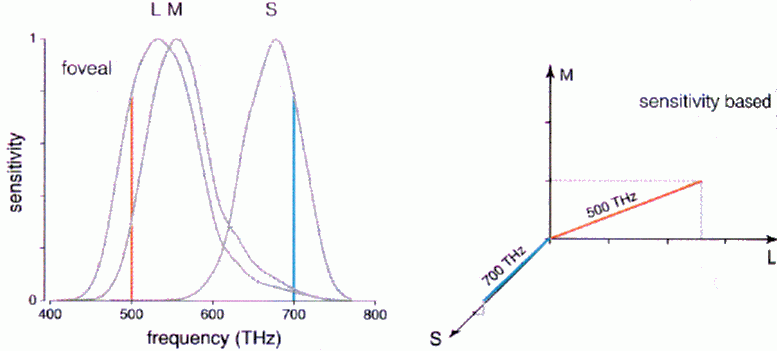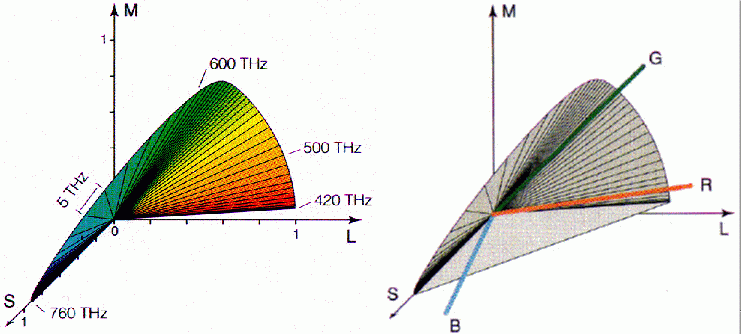The response intensities of the L, M and S cones can be used as the bases of the 3D color space. Any perceived color is represented by a ray or a vector initiated from the origin along a certain direction determined by the proportions between the LMS responses. Note that every point in this 3D space represents a unique perceived color, but not a unique physical color of unique energy spectral distributions. In other words, a point in the color space represents all energy spectral distributions that are perceived the same.
All spectral (monochromatic) color of single wavelength ranging from 350 nm to 780 nm form a curved surface like a bent fan starting from the long wavelength at 780 nm very close to the L axis and ending at short wavelength at 350 very close to the S axis. This surface is everywhere convex. If this surface is truncated by a specific intensity the resulting edge is the spectrum locus. The line connecting the two end points (for red and violet) is called the purple line.
Since any color as a function of the wavelength ![]() is a linear
combination of all the spectral colors,
is a linear
combination of all the spectral colors,


Note that energy distribution of light can be described by either wavelength
![]() or frequency
or frequency ![]() which are related by:
which are related by: